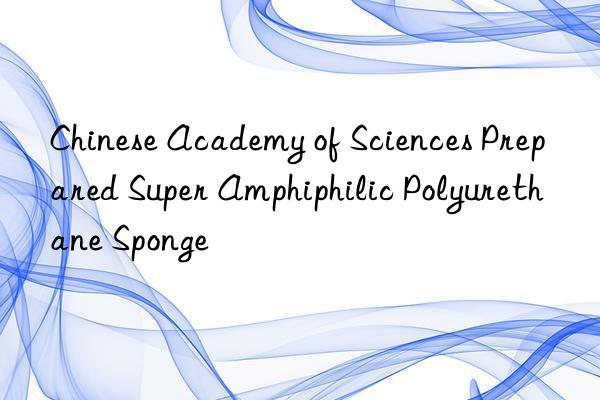
It is learned from the Chinese Academy of Sciences that the surface of super amphiphilic materials is also super hydrophilic And super lipophilic performance, is a special material surface properties. Recently, researchers from the Institute of Metal Research, Chinese Academy of Sciences used the synergistic effect of nanocellulose and graphene to obtain super-amphiphilic polyurethane sponges by dip coating. The contact angle of the super amphiphilic sponge to water and oil is zero degree, and it can quickly absorb water and oil in a short time. This achievement provides a new idea for the preparation of poroelastic materials with special wetting properties and their composite materials, which are expected to be applied in the fields of catalyst supports and intelligent polymer composite materials.
In recent years, the Polymer Composite Materials Research Group of the Titanium Alloy Research Department of the Institute of Metal Research has devoted itself to the research on the interaction between nanocellulose and graphene. The researchers confirmed through experiments that nanocellulose has a strong adsorption effect on two-dimensional graphene sheets, which is closely related to the molecular structure of cellulose, the size of nanocellulose whiskers and its surface properties. The strong adsorption between nanocellulose and two-dimensional graphene sheets improves the hydrophilicity of graphene, which can effectively promote the uniform dispersion of graphene in water.
Graphene-based porous materials can generally be obtained by chemical vapor deposition, electrochemical deposition, and freeze-drying. Using polyurethane sponge as a template, the researchers immersed it in graphene containing a small amount of nano-cellulose and pure graphene aqueous dispersion to prepare superhydrophobic polyurethane sponge. The sponge has good adsorption capacity for various oil products and has a good application prospect in the field of oil-water separation.
On the basis of the above work, by changing the process, the polyurethane sponge is coated with nanocellulose and graphene in sequence, and by adjusting the amount of nanocellulose, polyurethane with different surface wetting properties (hydrophobic-superamphiphilic-hydrophobic) can be obtained sponge. Studies have shown that the synergistic effect of nanocellulose whiskers and graphene constructs the special super-amphiphilic surface properties of polyurethane sponge. This is the first report in the world to directly obtain super-amphiphilic polyurethane sponge material by dip coating method.



 微信扫一扫打赏
微信扫一扫打赏
